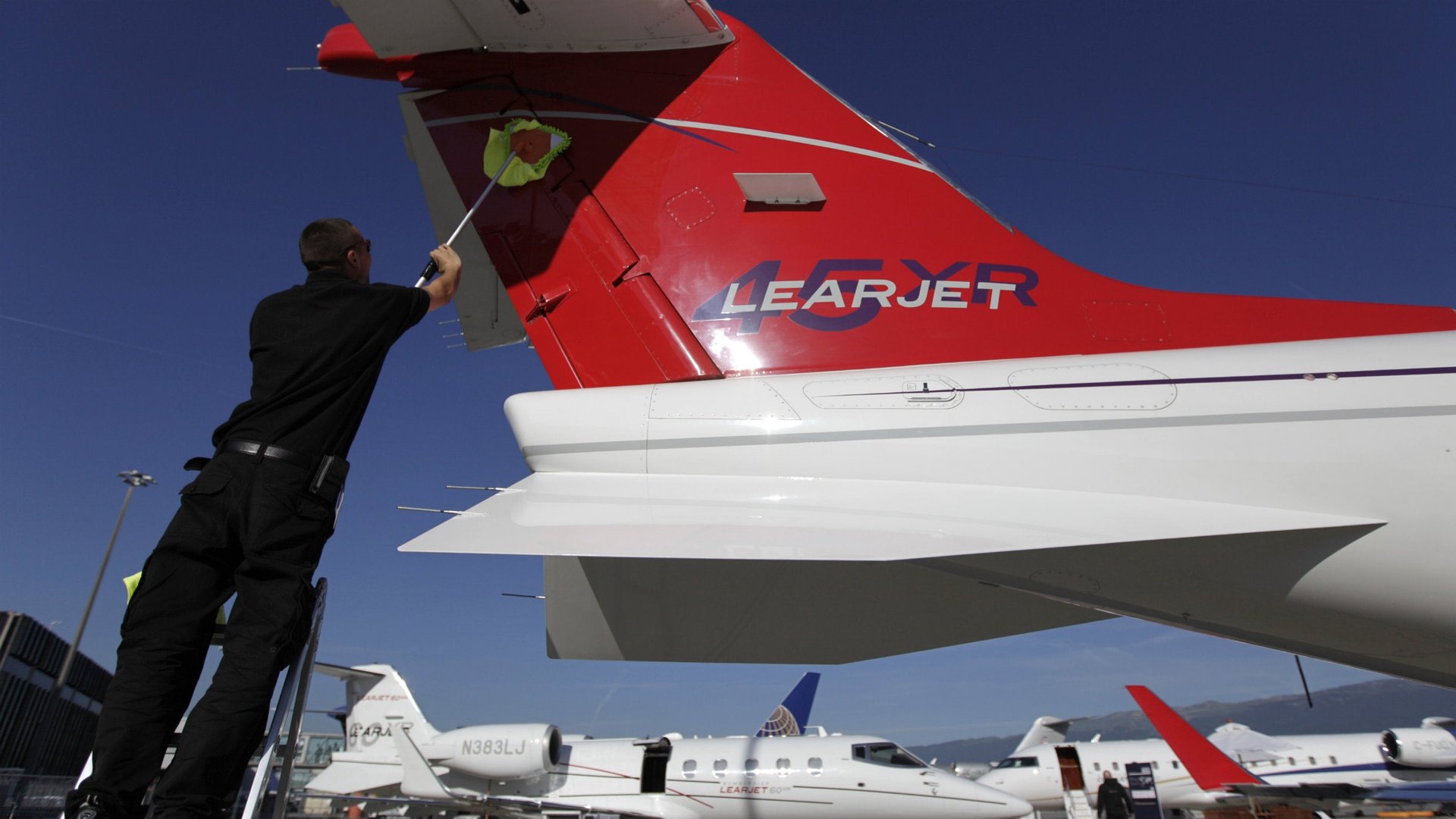Why the 1% don’t want Learjets anymore
The Learjet has been the standard-bearer for small, luxury private and business aircraft since the 1960s. It was once considered the ultimate status symbol. Countless companies—and celebrities like Frank Sinatra—have owned versions of the iconic planes over the past fifty years.


The Learjet has been the standard-bearer for small, luxury private and business aircraft since the 1960s. It was once considered the ultimate status symbol. Countless companies—and celebrities like Frank Sinatra—have owned versions of the iconic planes over the past fifty years.
But the Learjet, the latest version of which costs a cool $21 million, has encountered turbulence lately. Its owner Bombardier announced this week that it would lay off 600 workers from the plant in Kansas where the planes are assembled. That coincided with news that Learjet deliveries were down 25% last year.
“The global economy has remained persistently sluggish, and with its recovery taking longer than originally anticipated, 2013 continued to be a challenging year for aviation,” said Guy Hachey, president and chief operating officer of Bombardier Aerospace.
Yet other segments of the business aviation market aren’t suffering from sluggish demand. Gulfstream is adding staff amid rising orders for its latest, more expensive aircraft, the G650, which seats eight passengers and costs a reported $65 milion. General Dynamics, which makes the Gulfstream jets, said today it has experienced a “better than expected recovery” in jet aviation last quarter.
The rise of fractional aircraft ownership schemes like Warren Buffet-backed Netjets might be one factor, as they make it possible for the very rich to access ultra-luxury private aircraft that were once reserved for the ultra rich. Planes like the Gulstreams also have longer flying ranges and more comfort. (You can’t stand up in a Learjet, after all).
And when Netjets placed a massive $9.6 billion order with Bombardier in 2012, it was mainly for the more upscale Challenger brand, not Learjets. Even FlexJets, a rival to NetJets previously owned by Bombardier, is reportedly poised to order its first Gulfstream aircraft as it diversifies its fleet into longhaul planes.
To be fair, Learjet is suffering from problems at the level of its parent company. Montreal-based Bombardier is laying off another 1,100 jobs in Canada. Together with the Learjet layoffs, the move is designed to preserve cash after delays to the completion of its CSeries aircraft, which are for commercial use, and designed to compete with Boeing’s 737 and Airbus’s A320 models.
But the rise of the ultra-wealthy doesn’t appear to be helping its cause, either.